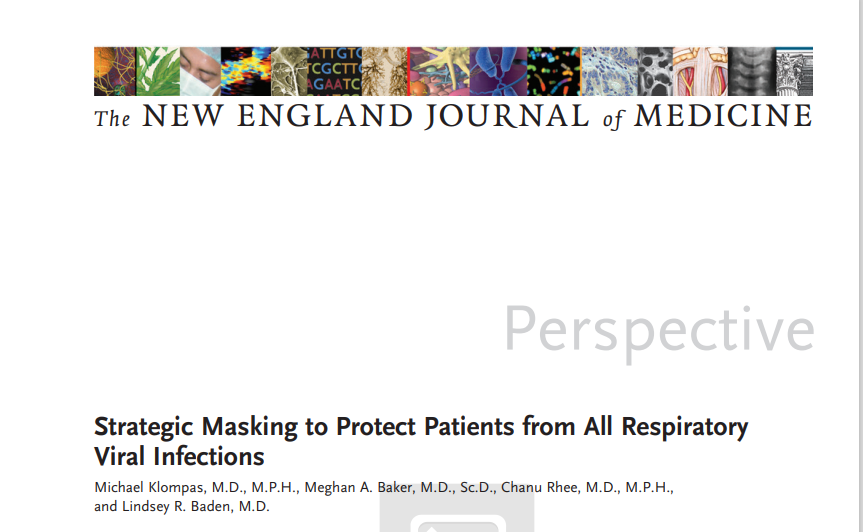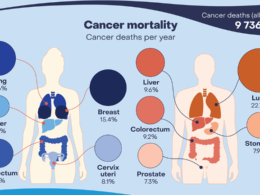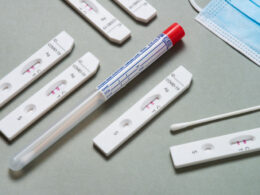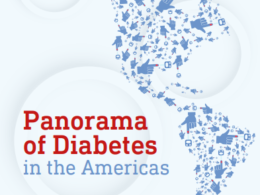the health strategist
multidisciplinary institute for health strategy,
digital health and continuous transformation
Joaquim Cardoso MSc
Chief Research and Strategy Officer (CRSO),
Editor in Chief and Senior Advisor
June 14, 2023
ONE PAGE SUMMARY
The SARS-CoV-2 pandemic has led to significant changes in healthcare, including the introduction of universal masking to reduce transmission in healthcare facilities.
With the decline in SARS-CoV-2 cases and the availability of vaccines and treatments, many healthcare centers are discontinuing universal masking outside of specific circumstances.
- However, hospitalized patients, particularly those who are older or have underlying health conditions, remain vulnerable to severe respiratory viral infections.
- Nosocomial infections caused by respiratory viruses other than SARS-CoV-2 are common and can lead to significant morbidity and mortality.
- Masks are effective in reducing respiratory viral spread and can help prevent asymptomatic and presymptomatic individuals from infecting patients.
- Studies from both before and during the pandemic suggest that masking among health care workers can reduce nosocomial respiratory viral infections by approximately 60%.4,5
Masking policies in healthcare facilities can be calibrated to community transmission levels or specific months of the year when viral activity is historically elevated.
- It is important for healthcare workers and visitors to mask when interacting with patients to protect against nosocomial infections.
- Masking requirements should be maintained year-round for patients at high risk of severe outcomes from respiratory viral infections.
While universal masking may not be necessary, healthcare facilities should reimagine masking policies to protect patients from the full range of respiratory viruses during elevated viral activity.
- It is crucial not to overlook the ongoing threat of SARS-CoV-2 and other respiratory viruses and to prioritize patient protection through appropriate masking strategies.
DEEP DIVE
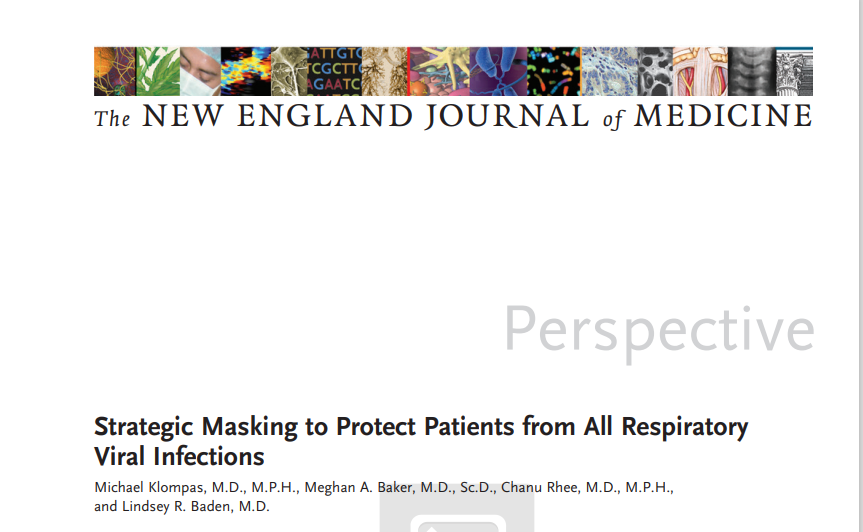
Strategic Masking to Protect Patients from All Respiratory Viral Infections
NEJM
Michael Klompas, M.D., M.P.H., Meghan A. Baker, M.D., Sc.D., Chanu Rhee, M.D., M.P.H., and Lindsey R. Baden, M.D.
June 14, 2023
The end of the public health emergency in the United States is a richly symbolic milestone in the course of the SARS-CoV-2 pandemic. During the height of the pandemic, the virus killed millions of people worldwide, upended lives, and radically altered health care. One of the most visible changes in health care was the introduction of universal masking, a measure designed to reduce SARS-CoV-2 transmission in health care facilities by applying source control and exposure protection to everyone in the facility. With the end of the public health emergency, however, many health care centers in the United States are now stopping universal masking and reverting to requiring masking in only limited circumstances (e.g., when health care workers are caring for patients with potentially contagious respiratory infections).
Discontinuing masking outside of health care contexts is understandable. Immunity acquired by means of vaccination and infections, combined with the widespread availability of rapid diagnostics and effective treatments, has dramatically reduced the morbidity and mortality associated with SARS-CoV-2. Most SARS-CoV-2 infections are now no more burdensome than the infections caused by influenza and other respiratory viruses that most people have long tolerated without feeling compelled to mask.
There are two reasons, however, why this framing has limited application to health care facilities. First, hospitalized patients are different from nonhospitalized populations. Hospitals, by definition, aggregate some of the most vulnerable people in society when they are at heightened vulnerability (i.e., when they have an acute illness). Vaccines and treatments for SARS-CoV-2 have reduced the morbidity and mortality associated with SARS-CoV-2 infections for the majority of the population, but there remain important subgroups that continue to be at elevated risk for severe disease and death, including older adults, people who have immunocompromising conditions, and people who have severe coexisting conditions, such as chronic lung disease or heart disease. Members of these groups constitute a large portion of hospitalized patients at any given time; many of them also make frequent visits to outpatient health care facilities.
Second, nosocomial infections caused by respiratory viruses other than SARS-CoV-2 are common and underappreciated, as are the possible adverse health effects associated with these viruses in vulnerable patients. Nosocomial transmissions and clusters of cases of influenza, respiratory syncytial virus (RSV), human metapneumovirus, parainfluenza virus, and other respiratory viruses occur surprisingly frequently.1 One fifth or more of cases of hospital-acquired pneumonia may be caused by viruses rather than bacteria.1 Moreover, the morbidity associated with respiratory viruses extends beyond pneumonia. Viruses can also cause substantial harm by exacerbating patients’ underlying conditions. Acute respiratory viral infections are well-established triggers for obstructive lung disease flares, heart failure exacerbations, arrhythmias, ischemic events, neurologic events, and death.2 Influenza alone is associated with up to 50,000 deaths per year in the United States. Conversely, measures designed to mitigate the harm associated with influenza, such as vaccination, are associated with reduced rates of ischemic events, arrhythmias, heart failure exacerbations, and deaths in high-risk patients.3
Viewed through the lens of these concerns, masking in health care facilities continues to make sense. Masks reduce respiratory viral spread from people with both recognized and unrecognized infections.1,4,5 SARS-CoV-2, influenza, RSV, and other respiratory viruses can cause mild and asymptomatic infections, so staff or visitors might not realize they are infected, yet asymptomatic and presymptomatic people can still be contagious and spread infections to patients. Furthermore, despite repeated requests by health care system leaders for symptomatic staff to stay home, “presenteeism” (coming to work despite feeling sick) remains common. Even during the height of the pandemic, some health care systems reported that 50% of staff diagnosed with SARS-CoV-2 worked while symptomatic.
Studies from both before and during the pandemic suggest that masking among health care workers can reduce nosocomial respiratory viral infections by approximately 60%.4,5
We acknowledge that there is widespread masking fatigue among health care workers, that many workers are keen to return to prepandemic practices, and that masks can be uncomfortable or impair communication. We believe the solution is to apply masking requirements judiciously by tying them to levels of virus transmission in the community, the activities that workers are engaged in at a particular time, and individual patients’ risk of severe disease.
The incidence of hospital-acquired respiratory viral infections correlates closely with respiratory viral transmission in the community. The higher the incidence of viral infections in the community, the greater the chance that a health care worker, visitor, or patient will be infected and transmit infection to a patient. Health care facilities can therefore consider calibrating masking policies to community transmission levels. The Centers for Disease Control and Prevention has proposed surveillance metrics that hospitals can use to trigger masking requirements, such as rates of influenza-like illness or emergency-department visits for influenza, RSV, and Covid-19. Alternatively, facilities might find it more straightforward to plan on requiring masking during the specific months of the year when respiratory viral activity has historically been elevated. This approach wouldn’t cover all periods when respiratory viruses are circulating, but it might serve as a reasonable compromise by increasing protection for patients when risks are highest and minimizing the imposition on health care workers when risks are lower. The strategy of requiring masking during set months each year would also involve simpler communication and planning for facilities than an approach that entails triggering masking at different times each year, depending on when community transmission rates cross specific thresholds.
Similarly, health care centers need not require everyone in the institution to mask in all settings. It’s most important for workers and visitors to mask when seeing patients, given the ethical imperative to protect patients from nosocomial infections. There is less basis for compelling staff members to mask outside of patient care, since most are no longer masking when they aren’t at work and are therefore continually being exposed to respiratory viruses, regardless of the facility’s masking policies. Allowing workers to elect to forgo masking outside of patient interactions would again strike a balance between protecting patients and minimizing the imposition on workers.
If health care facilities do elect to tie masking requirements to community transmission rates, we believe they should still require year-round masking for clinical interactions involving patients at particularly high risk for poor outcomes from respiratory viral infections.5 These patients include people with profound immunosuppression, such as those undergoing hematopoietic stem-cell transplantation, treatment with anti-CD20 agents, or heart or lung transplantation. Although these patients are also at low risk for acquiring infection when community transmission rates are low, their risk never falls to zero, since some respiratory viruses circulate year-round. The risk of severe disease in the context of a respiratory viral infection in this population is so high that protective measures are warranted even when the absolute risk of such infections is low. Similarly, these patients should be advised to wear masks themselves in higher-risk situations year-round.
The medical and public health communities have learned a tremendous amount over the past 3 years about the morbidity associated with respiratory viruses, nosocomial transmission, and measures to protect patients. It’s true that society has reached a transition point in the SARS-CoV-2 pandemic that very reasonably allows us to back off from universal masking in places other than health care facilities and even in such facilities during periods of low community transmission. We believe it would be a mistake, however, to ignore the threat that SARS-CoV-2 continues to pose to some patients or to fail to recognize that many other respiratory viruses pose a similar threat. Rather than abandoning universal masking for protection against SARS-CoV-2, health care facilities could reimagine masking polices to protect patients from the full array of nosocomial respiratory viral infections, using masking to protect all patients from all viruses when viral activity is elevated and the most vulnerable patients year-round.
Authors the authors & affiliations
Michael Klompas, M.D., M.P.H., Meghan A. Baker, M.D., Sc.D., Chanu Rhee, M.D., M.P.H., and Lindsey R. Baden, M.D.
From the Department of Population Medicine, Harvard Medical School and Harvard Pilgrim Health Care Institute, and the Department of Medicine, Brigham and Women’s Hospital — both in Boston (M.K., M.A.B., C.R.).
References
See the original publication
Strategic Masking to Protect Patients from All Respiratory Viral Infections | NEJM




